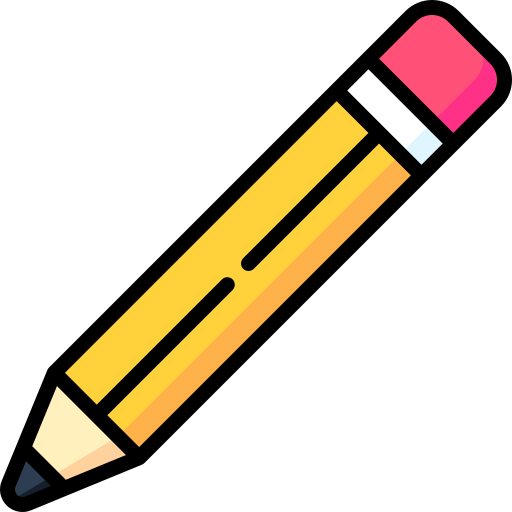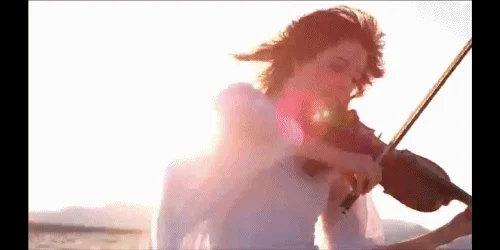
Do you have dreams of becoming a violinist?
Whether your dream has you playing music from the latest contemporaries or playing classical music with the local symphony, the first thing you need to know is where to start.
My introduction to the violin began when I was a child and has withstood the test of time. Throughout my lifetime, I have developed as a musician, playing in many concerts, recitals, competitions, and youth symphony orchestra (my favorite).
I have a deep passion for the gift of music and consider my violin to be my first love. And as a longtime violinist myself, here is my advice to help you get started on your journey and experience the joy of playing the violin.
Things to consider before your first lesson

What are your goals?
Are you planning to make this a lifelong hobby or do you want to play long enough to learn only a few easy songs? You should keep these thoughts in mind as you prepare for your first violin lesson.
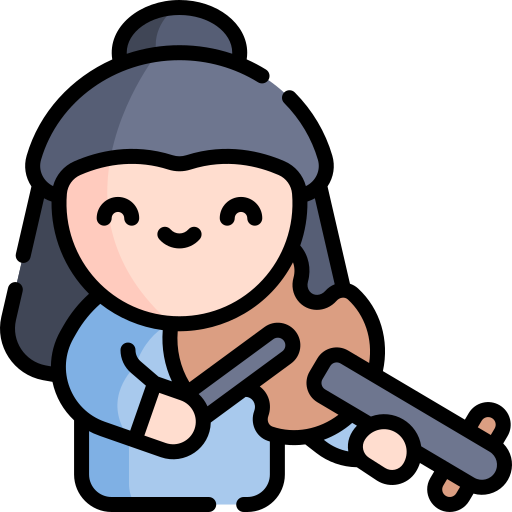
Are you up to the challenge?
Learning the violin may or may not come easy to you. The first challenge that you may have is learning to hold the violin.
It may feel uncomfortable at first. You'll be holding an inflexible wood instrument underneath your chin, with your left hand wrapped around the instrument and your right hand positioned on the bow.
In addition, you'll have to place your finger in very specific positions on the strings to make the correct notes. This may take some getting used to and it may initially be uncomfortable.

Andante, adagio, allegro, or vivace?
Learning to play the violin will take time. The words andante, adagio, allegro, and vivace are examples of tempos, or in other words they describe the speed of the music.
As you dive into your study of the violin, you'll learn many musical terms, as well as how to read music. These are two very important keys to mastering the art of playing the violin. Do you have the time to dedicate to your new interest?
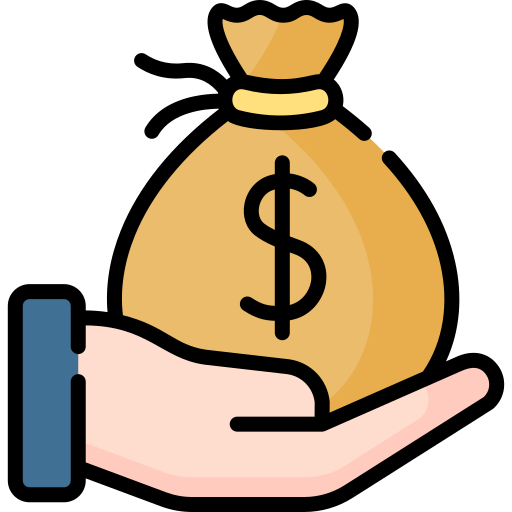
What is your budget?
Violins come in a range of sizes and price tags. Depending on where you get your violin, you can pay from $200 on up for a good quality violin. Compare the cost to rent vs. buying. Spend whatever works best for your budget.
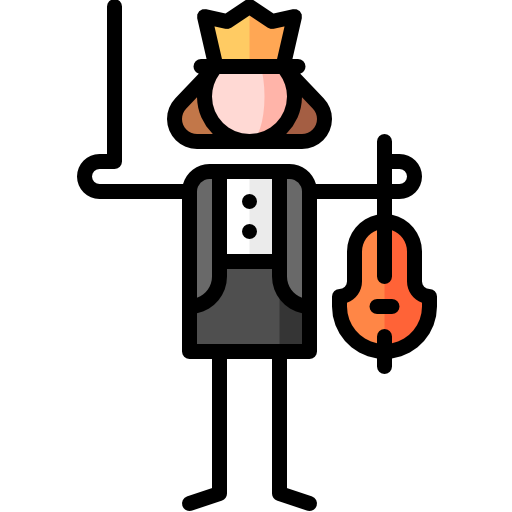
Which setting would you like to learn in?
With today's technology, you have more options than ever. You can learn in group lessons, individual or private lessons, virtual lessons with an instructor, or you can teach yourself with YouTube lessons. You can use one method, or combine methods to accelerate your efforts.
What do you need to get started?
The first thing you'll need to learn to play the violin — is the violin! Here's how to pick out a violin and its accessories before your first violin lesson:
Violin
Violins come in nine different sizes. The smallest size is 1/16 for 3-5 year olds and size 4/4 is for adults. This violin size chart shows the full range of violin sizes and can help you choose the violin size you may need. Here's an abbreviated reference chart (with measurements in centimeters):
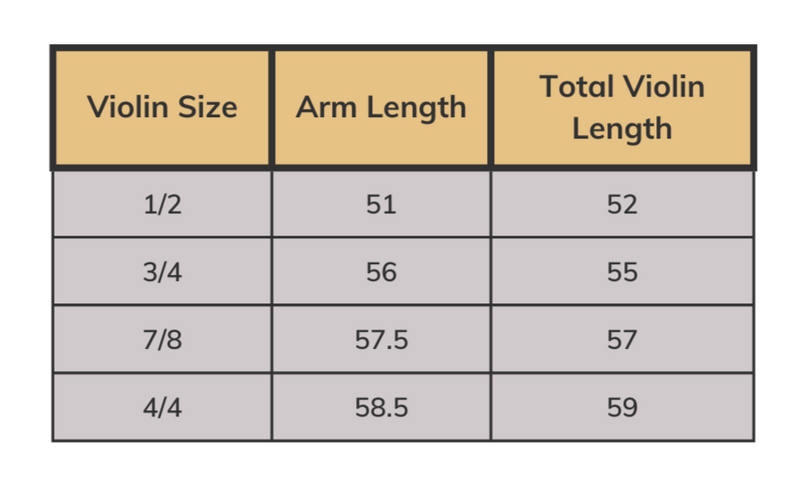 Image created by the author in Canva. To hear an audio description of the chart above, click the play button on the audio player below:
Image created by the author in Canva. To hear an audio description of the chart above, click the play button on the audio player below:
To measure for the violin size you need:
Straighten your arm out and hold it at a 90-degree angle to your body.
Measure in a line from your neck to the middle of your left palm.
Look at the chart above to see what size violin you will need.
If you are between sizes, you will size down to the smaller violin.
For teens and young adults, you're most likely to choose the highest sizes on the chart. Keep in mind: if you don't size into the full-sized 4/4 violin, and you're still growing, you'll likely need to size up to a larger size over time. Check this link to see an image of how to choose the right violin size.
Bow
After choosing the correct violin size, you'll also need to choose a bow. This part is much easier since the bow size is the same as the violin size. The bow stick is typically made of hardwood. Bow hair is made of horsehair. The bow will typically have 160-180 hairs.
Case
A case is a simple way to transport your violin, bow, and other accessories. You'll need a durable case where your violin can be carried safely and won't get damaged. You may get your violin case with your violin or order the case as a separate purchase.
Quiz
If your arm length is 58.3 cm (22.95 inches), which size violin should you use?
What else do you need?
You'll need to get some other small accessories before your first violin lesson:
 Image courtesy of Canva
Image courtesy of Canva
Rosin
Rosin is a small block typically made of solidified pine tree sap. It can either be light or dark. Rosin is applied to bow hair and is used to increase friction which helps the bow grip the strings, which causes string vibration. Violinists typically use light rosin, as it's less sticky and spreads easily.
 Image courtesy of Canva
Image courtesy of Canva
Shoulder rest or sponge and rubber band
These will help you support your violin comfortably. You can either buy a shoulder rest or use a budget option, a fabric-covered dish sponge along with a rubber band. The rest attaches to the back of the violin and will lay on your shoulder under the violin.
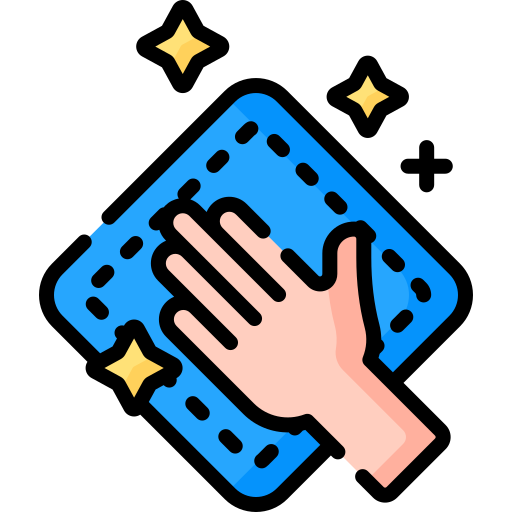
Soft cleaning cloth
As you play, rosin dust may fall from your bow. Use a soft cloth made of smooth microfiber or soft cotton (from a t-shirt) to clean the surface of your violin and to wipe the strings before storing it in the case.
Pencil
You'll need this to make notes or marks on your music. Using a pencil is a good idea because you can later erase or change the markings as you learn. Never use a pen!

An open mind
This is one of the most important "supplies". Learning an instrument takes work, an open mind, and the motivation to practice, practice, practice until you get better!
Give yourself a little grace, and don't be afraid to ask for help or look for resources that can help you get better.
Where can I get supplies?
There is a wide range of resources to find the supplies you need before your first violin lesson. As you look, you'll likely find more places that have supplies.
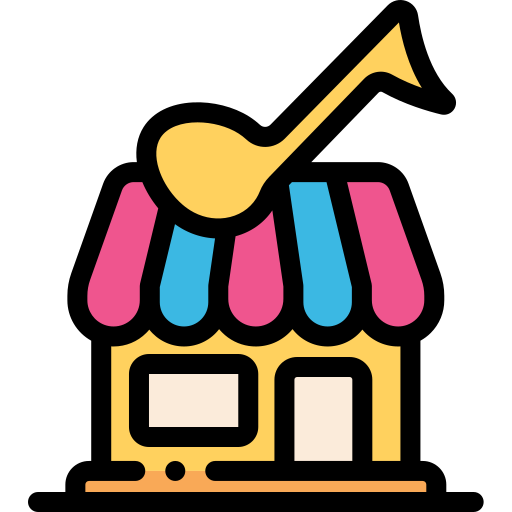
Community yard/garage or estate sales
Thrift stores
Local music stores — search the web for stores in your area, and make sure you inquire about buying vs. renting
Online music suppliers like fiddlershop, Stringworks, or Knilling
Online selling marketplaces such as Facebook Marketplace, OfferUp, eBay, Mercarí, Craigslist, Amazon, etc.
How much will this cost?
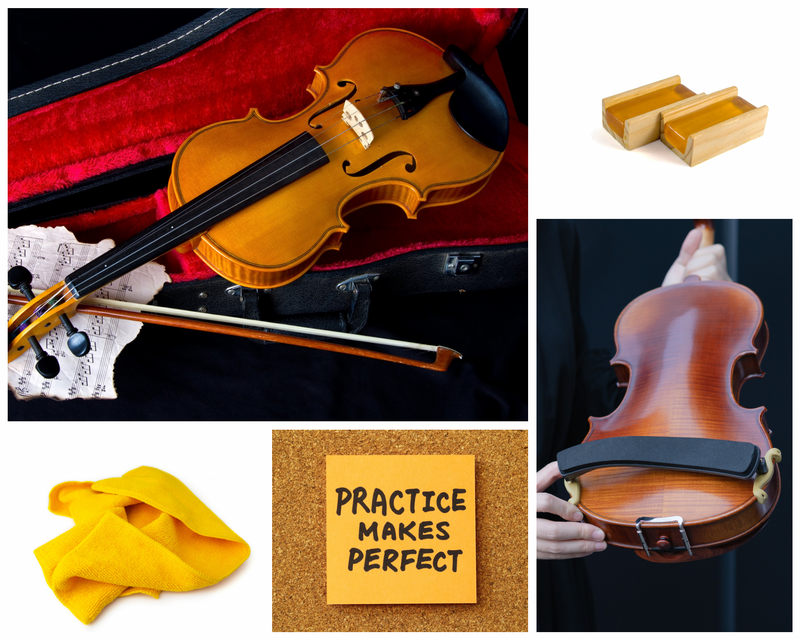 Image created by the author in Canva
Image created by the author in Canva
Violin and accessories
A good beginner violin outfit: including the violin, bow, and case can begin around $250 and can go as high as $5000 and higher, depending on your budget.
Violin lessons
Like the sizes of the violin, there is a range of opportunities available to learn the violin. Figure out what works best for your budget and the amount of time you would like to dedicate to learning. Look for instructors in your community at your local music store, symphony, church, conservatory, or university school of music.
YouTube: Free! Use keywords "free violin lessons"
Virtual instructor: $15-60 for a 30 minute 1-on-1 lesson
Group lessons: Average cost is $20 and up — search "group violin lessons near me"
In-person 1-on-1 lessons: Average $20-70 per hour lesson
Quiz
How often and how long should you practice violin?
Checklist for your first violin lesson
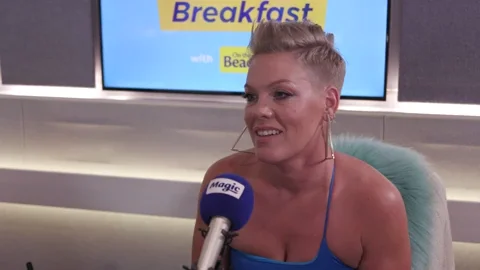
Now you're ready! Before you go to your first violin lesson, do a quick check to make sure you have everything you need:
Violin ✅
Bow ✅
Case ✅
Rosin ✅
Soft cleaning cloth ✅
Chin rest or sponge ✅
Pencil ✅
An open mind ✅
Take Action
Learning to play the violin is fun, challenging and exciting. There are so many cool things you can play, genres and different techniques you can learn, and many styles of violinists you can study that may help inspire you to keep at it!!

Check out the following tools to help you along your learning journey:
Your feedback matters to us.
This Byte helped me better understand the topic.

